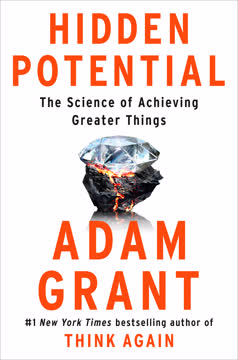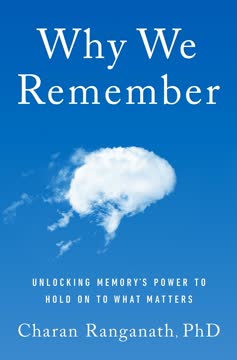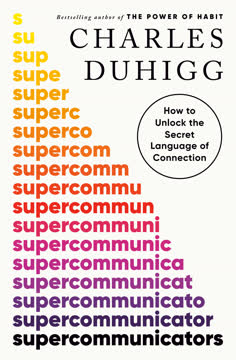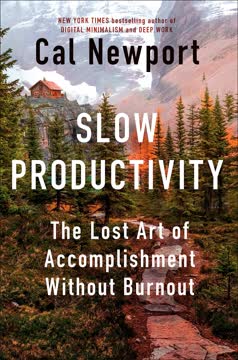Key Takeaways
1. The Performance Paradox: Why Working Harder Doesn't Always Lead to Improvement
The performance paradox is the counterintuitive phenomenon that if we want to improve our performance, we have to do something other than just perform.
Chronic performance trap. Many people fall into the trap of chronic performance, constantly trying to execute tasks flawlessly without taking time to learn and improve. This leads to stagnation and burnout, as individuals and organizations focus solely on getting things done rather than developing new skills and capabilities.
Breaking the cycle. To overcome the performance paradox, we must recognize that improvement requires more than just repeated execution. It involves:
- Deliberately setting aside time for learning and reflection
- Seeking feedback and analyzing mistakes
- Experimenting with new approaches and techniques
- Balancing performance with intentional skill development
By acknowledging the limitations of constant performance and embracing a more balanced approach, individuals and organizations can unlock their potential for growth and innovation.
2. Learning Zone vs. Performance Zone: The Key to Continuous Growth
To prosper in today's complex and fast-changing world, we need to balance and integrate performance and learning.
Understanding the zones. The Learning Zone is where we focus on improving skills and knowledge, often making mistakes and struggling as we push beyond our comfort zone. The Performance Zone is where we execute tasks to the best of our current abilities, aiming to minimize errors.
Balancing act. Successfully navigating between these zones involves:
- Recognizing when to focus on learning vs. performing
- Creating dedicated time and space for skill development
- Applying learning insights to enhance performance
- Developing the ability to learn while doing
By consciously alternating between these zones, individuals and organizations can maintain high performance while continuously evolving and adapting to new challenges.
3. Deliberate Practice: The Secret to Developing Expertise
To engage in deliberate practice: Break down abilities into component skills. Get clear about what subskill you're working to improve at any given time. Give full concentration to a high level of challenge outside your comfort zone, just beyond what you can currently do.
Key elements of deliberate practice:
- Focused effort on specific skills or subskills
- Pushing beyond current capabilities
- Immediate feedback and reflection
- Repetition and adjustment
- Guidance from skilled coaches or mentors
Implementation strategies. To incorporate deliberate practice into your routine:
- Identify the specific skills you want to improve
- Break them down into manageable components
- Set clear, challenging goals for each practice session
- Seek immediate feedback and analyze your performance
- Make adjustments based on feedback and repeat the process
By consistently engaging in deliberate practice, individuals can accelerate their skill development and achieve higher levels of expertise in their chosen fields.
4. Embracing Mistakes: Turning Failures into Opportunities for Growth
Mistakes are fundamental to continuous improvement. They're also an essential part of innovation, which entails identifying problems that have not yet been solved and coming up with new solutions.
Types of mistakes. Understanding different types of mistakes can help us respond more effectively:
- Sloppy mistakes: Errors in execution that can be avoided with better focus
- Aha-moment mistakes: Revelations that lead to new insights
- Stretch mistakes: Errors made while pushing beyond current abilities
- High-stakes mistakes: Errors with potentially severe consequences
Learning from failure. To maximize growth from mistakes:
- Cultivate a mindset that views mistakes as learning opportunities
- Analyze errors to identify root causes and potential improvements
- Share lessons learned with others to promote organizational learning
- Create systems and processes to prevent recurring mistakes
- Celebrate the courage to take risks and learn from failures
By reframing our relationship with mistakes, we can create a more innovative, resilient, and growth-oriented culture in both personal and professional contexts.
5. Growth Mindset: Cultivating the Belief That Abilities Can Be Developed
A growth mindset is the belief that our abilities and qualities can change—if we engage in the Learning Zone.
Key aspects of a growth mindset:
- Embracing challenges as opportunities for growth
- Persisting in the face of setbacks
- Viewing effort as a path to mastery
- Learning from criticism and feedback
- Finding inspiration in others' success
Cultivating a growth mindset. To develop and reinforce a growth mindset:
- Be aware of your self-talk and challenge fixed mindset thoughts
- Emphasize the process of learning rather than innate talent
- Celebrate effort and improvement, not just outcomes
- Seek out challenges that push you beyond your comfort zone
- Surround yourself with people who support and encourage growth
By adopting a growth mindset, individuals can unlock their potential for continuous improvement and achieve higher levels of success in various aspects of life.
6. The Growth Propeller: Five Elements That Drive Personal and Professional Development
To become a master learner and performer, work on developing your identity, purpose, beliefs, habits, and community.
The five elements of the growth propeller:
- Identity: How you see yourself as a learner and performer
- Purpose: Your motivation and direction for growth
- Beliefs: Your mindset and assumptions about learning and ability
- Habits: The routines and practices that support your development
- Community: The people and environment that influence your growth
Strengthening your growth propeller. To enhance each element:
- Identity: Embrace a self-image as a lifelong learner and evolving individual
- Purpose: Clarify your goals and connect them to a broader mission
- Beliefs: Cultivate a growth mindset and challenge limiting assumptions
- Habits: Develop routines that support deliberate practice and reflection
- Community: Surround yourself with supportive, growth-oriented people
By aligning and strengthening these five elements, individuals can create a powerful engine for personal and professional development, driving continuous growth and achievement.
7. Creating a Learning Organization: Fostering a Culture of Continuous Improvement
To build teams and companies that crush the performance paradox and deliver results while continuing to reach new heights of success, we need to shift our beliefs—our mindsets—about people, management, and leadership.
Key characteristics of learning organizations:
- Emphasis on continuous learning and skill development
- Open communication and knowledge sharing
- Experimentation and risk-taking encouraged
- Mistakes viewed as learning opportunities
- Regular feedback and reflection practices
Building a learning culture. To foster a learning organization:
- Align organizational values and practices with growth mindset principles
- Create structures and systems that support learning (e.g., mentoring programs, skill-sharing platforms)
- Encourage cross-functional collaboration and knowledge exchange
- Reward learning behaviors and innovation, not just performance outcomes
- Provide resources and time for skill development and experimentation
By transforming into a learning organization, companies can adapt more quickly to change, innovate more effectively, and achieve sustainable long-term success.
8. Leading for Growth: How to Inspire and Support Learning in Teams
To lead learning cultures, we need both actions and words to align. When there are mixed messages, actions speak louder than words, but without words, our actions can easily be misinterpreted in many different ways.
Effective leadership strategies:
- Model learning behaviors and vulnerability
- Provide clear guidance on when to focus on learning vs. performing
- Create psychological safety for risk-taking and experimentation
- Offer regular feedback and opportunities for reflection
- Align rewards and recognition with learning and growth
Fostering a learning environment. Leaders can support team growth by:
- Establishing clear learning goals alongside performance objectives
- Creating dedicated time and space for skill development
- Encouraging knowledge sharing and collaboration
- Celebrating learning efforts and insights, not just successful outcomes
- Providing resources and tools to support ongoing development
By consistently demonstrating and reinforcing the value of learning, leaders can create a culture where continuous improvement becomes the norm, driving both individual and organizational success.
9. Overcoming the Performance Paradox: Strategies for Integrating Learning and Doing
We don't learn by doing, but we can learn while doing. Most of us will find our greatest opportunities not in dedicating blocks of time solely to the Learning Zone, but in changing the way we work so we regularly leap beyond the known while getting things done.
Balancing learning and performance. To effectively integrate learning and doing:
- Set clear intentions for what you want to learn in each situation
- Create mini-experiments within your daily work
- Reflect on experiences and extract lessons regularly
- Seek feedback from colleagues and stakeholders
- Adjust your approach based on new insights
Practical implementation. Strategies for learning while doing:
- Use the "Five Whys" technique to dig deeper into problems and uncover root causes
- Conduct brief post-mortems after projects or important meetings
- Rotate roles or responsibilities to gain new perspectives
- Pair experienced team members with newcomers for mutual learning
- Establish regular "learning loops" to capture and share insights across the organization
By consistently integrating learning into everyday activities, individuals and organizations can overcome the performance paradox, achieving both immediate results and long-term growth.
Last updated:
FAQ
What's The Performance Paradox about?
- Core Concept: The Performance Paradox by Eduardo Briceño explores the idea that focusing solely on performance can lead to stagnation. It emphasizes the need to balance performance with learning for true growth.
- Performance Paradox: The book introduces the performance paradox, which suggests that constant execution without learning can hinder progress. Integrating learning into daily tasks is essential for improvement.
- Two Zones Concept: Briceño highlights the importance of the Learning Zone and the Performance Zone, explaining how balancing both can lead to better outcomes and personal transformation.
Why should I read The Performance Paradox?
- Transformative Insights: The book offers valuable insights into overcoming chronic performance issues, providing strategies to foster a growth mindset and improve effectiveness.
- Applicable to All: Whether you're an individual or a leader, the concepts are universally applicable, helping anyone thrive in a fast-paced world.
- Real-Life Examples: Briceño shares compelling stories from various individuals and organizations, making the principles relatable and easier to understand.
What are the key takeaways of The Performance Paradox?
- Balance Learning and Performing: Integrating learning into performance is crucial to avoid stagnation and achieve better outcomes.
- Mistakes as Learning Opportunities: Mistakes are essential for growth, and the book encourages embracing and reflecting on them for improvement.
- Growth Mindset Importance: Developing a growth mindset is vital for personal and professional development, influencing performance and learning.
What is the Performance Zone and Learning Zone in The Performance Paradox?
- Performance Zone Defined: This zone focuses on executing tasks effectively, often under pressure, and is essential for getting things done.
- Learning Zone Defined: This zone promotes skill development and experimentation, encouraging feedback and reflection for long-term growth.
- Integration of Zones: Briceño argues that toggling between these zones allows for immediate performance and continuous improvement.
How can I overcome chronic performance as described in The Performance Paradox?
- Recognize Symptoms: Chronic performance is a constant race to complete tasks without reflection or learning. Identifying these patterns is crucial.
- Embrace Feedback: Actively seek feedback to shift focus from merely performing to learning and growing.
- Set Learning Goals: Establish specific learning objectives alongside performance targets to encourage a culture of growth.
What are the six essential Learning Zone strategies mentioned in The Performance Paradox?
- Deliberate Practice: Engage in focused practice targeting specific skills needing improvement, involving feedback to refine abilities.
- Experiment Small: Conduct small-scale experiments to test new ideas, minimizing risk and allowing quick adjustments.
- Work Smarter: Enhance productivity by identifying and implementing strategies learned from others and continuously seeking better methods.
How do mistakes contribute to learning according to The Performance Paradox?
- Mistakes as Learning Tools: Mistakes are opportunities for growth, prompting reflection and leading to significant insights.
- Neuroplasticity Trigger: Mistakes trigger neuroplasticity, releasing chemicals that enhance focus and facilitate learning.
- Reflection is Key: Reflecting on mistakes helps identify what went wrong and how to improve in the future.
What misconceptions about learning does The Performance Paradox address?
- Growth Mindset Misunderstandings: A growth mindset is about believing in change through learning, not just hard work or positive thinking.
- Performance vs. Learning: Learning does not detract from performance; it drives higher performance.
- Praise and Encouragement: Not all praise is beneficial; it's important to praise effort and process rather than innate talent.
How can organizations foster a learning culture as described in The Performance Paradox?
- Establish Clear Values: Define and communicate core values related to learning and growth to align employee behaviors with goals.
- Implement Learning Structures: Create systems supporting ongoing learning, such as feedback sessions and training programs.
- Encourage Risk-Taking: Foster an environment where employees feel safe to take risks and make mistakes, promoting innovation.
What are some practical steps to integrate the Learning Zone into daily work?
- Set Learning Intentions: Identify specific skills or knowledge areas to focus on, keeping learning at the forefront of activities.
- Solicit Feedback Regularly: Encourage a culture of feedback where team members share insights and suggestions.
- Reflect on Progress: Allocate time for regular reflection on what has been learned and what can be improved.
What are the best quotes from The Performance Paradox and what do they mean?
- "Art is never finished, only abandoned.": Reflects the idea that growth and learning are ongoing processes, encouraging continuous development.
- "If we just do what we think works best, without subjecting our thinking to testing and experimentation, we stagnate.": Highlights the importance of experimentation and learning for progress.
- "The most valuable asset really is a lifelong learning mindset.": Emphasizes the significance of continuous learning and adaptability in a changing world.
How does The Performance Paradox address the issue of collaboration in teams?
- Building Trust: Trust among team members is crucial for effective collaboration, allowing safe sharing of ideas and risks.
- Establishing Norms: Teams should establish clear norms for communication and collaboration, such as active listening.
- Leveraging Diversity: Diverse perspectives foster innovation and problem-solving, leading to more creative solutions.
Review Summary
The Performance Paradox by Eduardo Briceño receives high praise for its fresh perspective on achieving success through balancing performance and learning. Readers appreciate the practical insights, engaging storytelling, and actionable strategies for personal and organizational growth. The book challenges traditional beliefs about hard work and introduces the concept of Learning and Performance Zones. While some find it repetitive, many consider it a game-changer for creating balanced, growth-oriented lives and workplaces. The book's emphasis on continuous improvement and adaptability resonates with readers across various fields.
Similar Books










Download PDF
Download EPUB
.epub digital book format is ideal for reading ebooks on phones, tablets, and e-readers.




